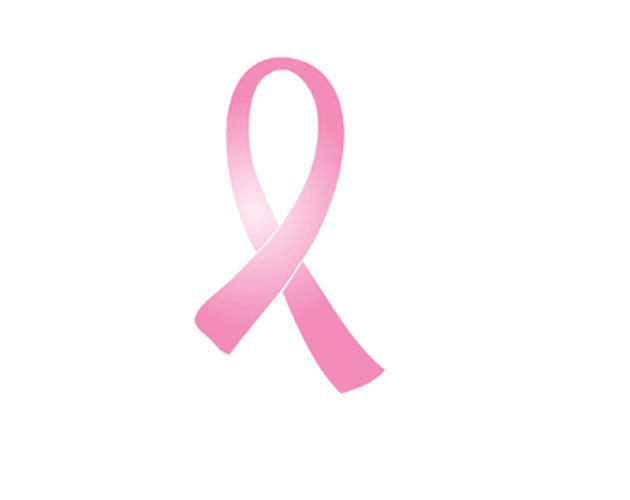The Sneaky Symptoms of Women’s Cancers

Don’t be alarmed, but be aware. What you should know about the early warning signs of gynaecological cancers.
We wish cancer didn’t exist. Since it does, we wish sirens and alarms would go off at the first sign of trouble. Unfortunately, many cancers aren’t caught in their earliest and most treatable stages because the symptoms can be vague — if there are symptoms at all.
We see a lot of “pink” awareness efforts in the media, but other women’s cancers don’t get so much publicity — such as ovarian, endometrial (or uterine), cervical, vaginal and vulvar cancers. While not as common as breast cancer, they can be even more deadly. For example, 2600 Canadian women are diagnosed with ovarian cancer each year and 1750 women die because of it.
Our chances of developing gynaecological cancers increase as we age — and factors such as family history, being overweight or obese, smoking, hormone replacement therapy and reproductive history can increase our risk. In many cases, there aren’t routine screening tests to help detect the issue.
However, just as we can be “breast aware” we can also be aware of the symptoms and changes to our body which could be warning signs.
NEXT: WARNING SIGNS TO WATCH FOR
Warning signs to watch for
While each type of gynaecological cancer is different, they have many common symptoms. (Think about how close and interconnected our organs are down there.) Symptoms differ from person to person but can include:
Ovarian cancer:
– Bloating or swelling in the abdomen.
– Feeling full after eating little.
– Digestive symptoms such as gas, nausea, vomiting, constipation and loss of appetite.
Ovarian cancer and other gynaecological cancers:
– Pain in the lower abdomen of pelvic region. Some people also report a feeling of fullness or heaviness.
– Irregular periods and heavy bleeding.
– Irregular bleeding such as bleeding between periods, after sex or after menopause.
– Pain during sex.
– Unexplained lower back pain.
– Changes to bladder habits such as more frequent need to urinate or sudden urge to urinate.
– Unexplained weight loss or gain.
– Unusual vaginal discharge (may be “pus-like” and smell foul).
– A lump (in the case of vaginal and vulvar cancers).
Experts say it’s worth a conversation with your doctor if you experience these symptoms for longer than two to three weeks — or if they get worse.
If these signs sound familiar, don’t panic — most of the time they’re caused by common and less serious conditions. A physical exam and tests can help get to the root of the cause.
NEXT: TESTS THAT CAN UNCOVER THE TRUTH
Tests that can uncover the truth
There’s no single test that can easily detect women’s cancers. Diagnosing the condition may involve a variety of measures, including:
– A routine pap test to help detect cervical and vaginal cancers, but not ovarian or uterine cancers. Experts say women should have a pap test every 1-3 years, sometimes even if they are no longer having sex or have had a hysterectomy.
– A pelvic exam to feel for lumps or other abnormalities.
– Blood tests to look for abnormalities in the blood — like the CA-125 test which can help diagnose ovarian cancer. Doctors often check red blood cell count to see if the patient may be suffering from anemia due to bleeding.
– Imaging studies such as ultrasound, transvaginal ultrasound, x-rays, CT scans or MRI scans. These studies are also used to help determine the location and size of a tumour.
– A colposcopy where the doctor examines the vagina and cervix using a scope with a light and magnifier.
– A biopsy is necessary to make a definitive diagnosis. In some cases, doctors will recommend a hysteroscopy where a small tube containing a light and camera can get a look inside the uterus and take samples from any abnormal areas. A dilation and curettage (or D&C for short) allows doctors to take a sample from inside the uterus. A biopsy is also taken during a colposcopy.
If cancer is the diagnosis, doctors will do further tests to see if it has spread.
Again, it’s important to remember that symptoms of gynecological cancers are also associated with many common conditions. The message from experts is not to be alarmed if you’re experiencing them — but not to dismiss them either. Sometimes we’re a little too eager to dismiss this or that issue as being part of the “aging process”, but experts note there’s nothing normal about these symptoms. Chances are the cause is harmless, but there are still treatments and lifestyle strategies that can help.
A little good news to leave you with: overall, more people are surviving cancer thanks to better prevention, earlier detection and new treatments. Hopefully we’ll one day be able to report that women’s cancers are a thing of the past, but in the meantime new treatments and tests continue to be investigated.
ON THE WEB
For more information on women’s cancers, visit:
The Canadian Cancer Society
Ovarian Cancer Canada
U.S. National Cancer Institute
U.S. Centers for Disease Control and Prevention fact sheets
Women’s Cancer Network
Additional sources: Health Canada, MedicineNet.com, Public Health Agency of Canada, WebMD Cancer Health Center, U.S. National Library of Medicine PubMed Health,
READ MORE
Top myths about breast cancer
A new way to treat cancer?
Foods that prevent cancer
Listening to the disease that whispers
8 ways to prevent cancer